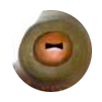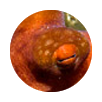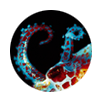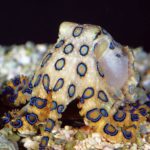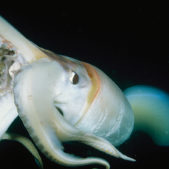How the database works
CephRes-gdatabase is made by a “genome browser” based on Kent et al. (2002) including some tools such as the table browser, BLAT and custom tracks. The features available allow also to connect with other databases such as Ensembl, Primer3Plus, etc.
This genome database browsing and mining initiative is a joint venture of CephRes and UniVienna.
Features implemented
Table browser:
The table browser enables the user to mine and filter big datasets using several parameters which produces subsets that can be compared.
BLAT:
This Blast-Like-Alignment tool allows for fast alignments of any sequence with a minimum length of at least 25 bp.
Tools –Blat
Enter your query as a nucleotide or protein sequence
Output: List of best matches to your query.
Details: nucleotide sequence;scaffold id,matching regions;….
Browser: graphical view of your alignment on the genome
Custom tracks
It is possible to upload your private data to the genome browser:
My data – Custom tracks – Paste URLs or data:
Enter the gene position: ScaffoldID_StartPos_StopPos_GeneID
or
Enter the gene sequence
My data – Custom tracks – Optional track documentation:
Enter your personal gene annotation.
More information on how to add custom tracks can be find here:
https://genome-euro.ucsc.edu/goldenPath/help/customTrack.html
In silico PCR
By entering possible primers it is possible to simulate a PCR in silico against the entire genome, which will permit more efficient and specific primer design.
Sessions tool
By creating a session you can save the current mode of the genome browser and go back to the same settings at a later time.
For more info see:
http://metazoa.csb.univie.ac.at/ugb/public/goldenPath/help/hgSessionHelp.html
CephRes-gdatabase (CephRes Genomes Database) is an open genomic resource aimed to support cephalopod biologists and all evolutionary and comparative genome biologists to explore genomic data of these fascinating organisms. It represents a resource for mining various genomes of cephalopod species to help advancing cephalopod research and biological sciences, in general; it serves also to facilitate research from the scientific community at large to help to promote research around cephalopod genomic novelties. Through the use of the browsers it is possible to visualize whole genomes on different scales, until single base pair resolution.
The graphical interfaces which visualize the different genome assemblies is based on the genome browser originally designed by Kent and coworkers (2002; Genome Res. 12: 996-). Currently, Genome Database includes various species of octopus (O. vulgaris, .O. bimaculoides, Callistoctopus minor, Hapalochaena maculosa) and of the Hawaiian bobtail squid (Euprymna scolopes) and the giant squid (Architeuthis dux). Next implementations will include other cephalopod species.
We are committed to continue to facilitate the growth of cephalopod community and to facilitate the sharing of tools.
The reference guided genome assembly of O. vulgaris described in Zarrella et al. (under revision) can be accessed here. For a more detailed description of the different assembly characteristics please refer to Zarrella et al. Annotation tracks are absent in the genome browser due to the short scaffold length which impedes gene prediction.
Information on the biology of the common octopus (O. vulgaris) and its description is available through various sources. A short overview will be provided here in the next future.
The genome browser of O. bimaculoides includes the data published by Albertin et al., 2015. Gene prediction models are added in the genome browser.
Information on the biology of the California two-spot octopus (O. bimaculoides) and its description is available through various sources. A short overview will be provided here in the next future.
The genome browser of C. minor includes the data published by Kim et al., 2018.
Information on the biology of the Korean common octopus (C. minor) and its description is available through various sources.
A short overview will be provided here in the next future.
The genome browser of E. scolopes includes the data published by Belcaid et al., 2019. Gene prediction models are added in the genome browser.
For this species we also provide access to: Peptide sequences; (CoDing) CDS sequences; Gene locations.
Information on the biology of the Hawaiian bobtail squid (E. scolopes) and its description is available through various sources. A short overview will be provided here in the next future.
The genome browser of H. maculosa includes the data published by Whitelaw et al., 2020. The original study includes important comparative information about tissue-specific genes expressed in the posterior salivary gland of three cephalopod species (non–tetrodotoxin-bearing octopods vs. tetrodotoxin in H. maculosa).
Information on the biology of the Southern blue-ringed octopus (Hapalochlaena maculosa) and its description is available through various sources.
A short overview will be provided here in the next future.
The genome browser of A. dux includes the data published by da Fonseca et al., 2020. As mentioned in the original study, this draft genome is an important resource on the unique traits of this species, i.e. gigantism and key adaptations to deep-sea environments.
Information on the biology of the giant squid (Architeuthis dux) and its description is available through various sources.
A short overview will be provided here in the next future.

